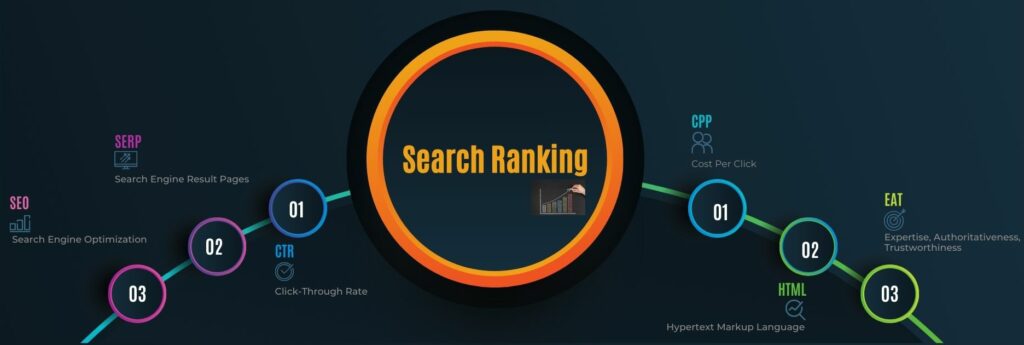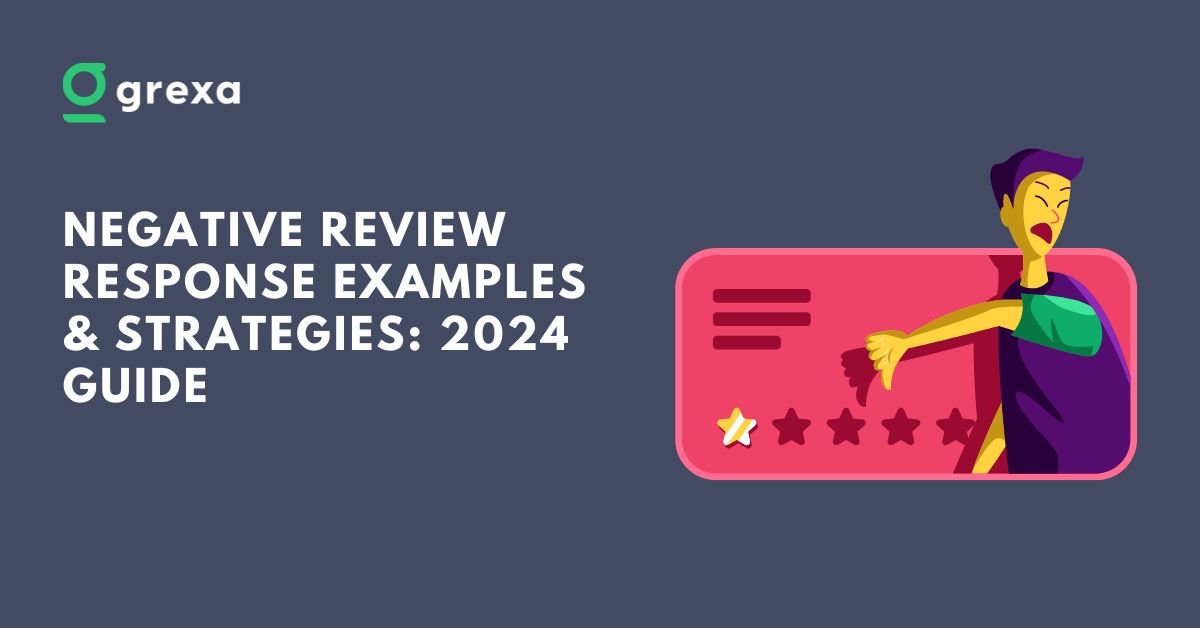Table of Contents
The Ultimate Guide to SEO Acronyms: Decoding the Language of Search
Within the realm of digital marketing and technological advancements, getting the grasp of SEO acronyms can be a secret recipe to your business to gather organic traffic and helps you in ranking in near me searches. However, understanding SEO abbreviations can be difficult at times. But worry not! We have broken down this essential marketing abbreviation list into simplified and easy to understand ways so that you can ace up and improve your local SEO ranking factors.

SEO: Search Engine Optimization
Let’s start from the basics of SEO abbreviation list. SEO stands for Search Engine Optimization which is a combination of strategies and executions with the aim being to have an optimized organic traffic and improve your website’s visibility in search engine results pages (SERPs).
Boosting your local SEO presence and rank high in search results is possible by following a set process.
SERP: Search Engine Results Page
You probably got an idea what SERP means. It’s exactly as the name suggests, a page displayed by search engines in response to a user’s search query. This is an important tool from the marketing abbreviation list, and understanding it can significantly improve your result page ranking strategy and boost your online presence.
Ranking high in SERP not only increases your CTR, but also affects trustability and dominates local search.
CTR: Click-Through Rate
Now you might be wondering, what is a CTR? Simply put, it is the percentage of people who tend to click on your link after seeing it in search results. Having the insights of this SEO short form can give an idea that which product or service is performing better.
It is an insightful tool for measuring traffic to your website. Also, do not confuse it with CPC!
CPC: Cost Per Click
CPC is in a simplified way, the amount an advertiser pays each time a user clicks on their ad. Understanding CPC and building a detailed strategy can have a positive impact on your business’s budget and profits.
PPC: Pay-Per-Click
PPC is a way of buying visits to your site rather than attempting to “earn” those visits organically. It is an advertising model where advertisers pay a fee each time their ad is clicked. PPC is an important element for advertising your business and giving potential customers an idea that your website is active and updated.
DA: Domain Authority
DA or Domain Authority is a search engine ranking score that predicts the performance of your website on SERPs. This SEO short form is a crucial tool for measuring and monitoring your ranking in search results. You can use the insights of DA for preparing an effective SEO strategy and enhance your search result ranking.
PA: Page Authority
It is similar to DA, but instead of predicting the ranking of websites, it forecasts the potential of specific webpage in search engines. This is an important part of the marketing abbreviation list that can have an impact in developing your Google My Business SEO.
DR: Domain Rating
Domain Rating is an Ahrefs’ metric that determines the strength of a website’s backlink profile. Backlinking of your website with multiple famous and reputable sources and sites can significantly enhance your reputation and popularity of your website. DA comes into picture and measures how strong the backlink profile of your website is.
UR: URL Rating
URL Rating is also an Ahrefs’ metric that computes the strength of an URL by the amount of backlinks pointing to it. The stronger your URL is, the higher will be your ranking in local search results.
This also helps in establishing the credibility and authority of your website URL.
AI: Artificial Intelligence
The simulation of human intelligence processes by machines, especially computer systems. Integrating AI in multiple components of your businesses like managing Google reviews, giving instructions, assisting customers for booking etc. can enhance your business conduct and decrease workload.
HTML: Hypertext Markup Language
HTML is a simple tool from the marketing abbreviation list that helps you in creating web pages and web applications. This is the first thing that you will need to go through for creating your business’s website.
CSS: Cascading Style Sheets
It is a style sheet language that is used for describing the presentation of your document written in HTML.
URL: Uniform Resource Locator
URL is an address of a web page or file on the internet. The stronger your URL with keywords rich content, the better it will perform in search engine result pages.
ALT: Alternative Text
Alternative Text is a descriptive text added to an image’s HTML code. It is an SEO short form that provides context of your image for search engines and screen readers. You can boost your local SEO by putting keyword rich text in ALT.
EAT: Expertise, Authoritativeness, Trustworthiness
EAT is Google’s concept for evaluating the quality of your web’s content and you. It gives a rough image of you through your content and other details. EAT is an important element of the marketing abbreviation list that will help your business in boosting its SEO and online reputation.
YMYL: Your Money or Your Life
It is a type of content that can potentially impact a person’s future happiness, health, financial stability, or safety.
LSI: Latent Semantic Indexing
It is a mathematical method that bridges the gap between terms and concepts in content.
LSI is a crucial SEO short form for contextual relevance in SEO. It aids search engines to understand your content more like humans do.
DNS: Domain Name System
It is simply a system that translates your human-readable domain names into IP addresses.
IP: Internet Protocol
It is a set of rules that govern the format of your data sent over the internet or local network. This SEO short form has a significant role in ranking your website in local searches by aligning with its guidelines.
CDN: Content Delivery Network
CDN is a geographically distributed group of servers that work together to provide fast delivery of Internet content. The faster your website can get, the higher it will rank in viewers’ experience and lessen your bounce rate.
AMP: Accelerated Mobile Pages
It is an open-source HTML framework developed by Google to create fast-loading mobile web pages.
SSL: Secure Sockets Layer
SSL is concisely put, a security protocol that creates an encrypted link between a web server and a web browser.
GA: Google Analytics
Google Analytics is a crucial part of the marketing abbreviation list which is a go to platform that offers multiple web analytics services that track and report your website traffic. UX refers to the overall experience your website offers to visitors, and having an insight of your website regarding its monthly traffic, bounce rates, average visit duration etc. is an important component of your local ranking tracker.
GSC: Google Search Console
Google Search Console is a free service from Google that helps you monitor, maintain, and troubleshoot your site’s presence in search results.
GTM: Google Tag Manager
Google Tag Manager is a tag management system that allows you to quickly update tags and code snippets on your website. Putting keyword rich tags and engaging snippets can have a remarkable improvement in your website’s traffic and search ranking.
UTM: Urchin Tracking Module
These are parameters added to URLs to track the effectiveness of your online marketing campaigns. It is an essential tool from the marketing abbreviation list that can help in improving your website’s CTR and overall reputation.

NAP: Name, Address, Phone Number
NAP is an important SEO short form which includes detailed information of your business that helps any potential customers find your website on local searches.
Consistent NAP information across the web is crucial for your local SEO.
GMB: Google My Business
GMB is a free tool from Google that helps you to manage your business’s online presence across Google, including Search and Maps. This is a key part in managing your online business and reaching maximum potential customers.
PWA: Progressive Web App
A type of application software delivered through the web, built using common web technologies.
CWV: Core Web Vitals
A set of metrics related to speed, responsiveness, and visual stability of pages. Regularly monitoring and improving your CWV can enhance your website organic traffic and overall boost your website ranking in local search results.
CR: Conversion Rate
The percentage of visitors to your website that complete a desired goal. Your conversion rate is directly related to your business’s performance and product or service popularity. You can improve your CR through maintaining a viewer friendly experience and provide users the products or services they require.
BR: Bounce Rate
As we have mentioned earlier on Google analytics, bounce rate is an important SEO short form that shows the percentage of visitors who enter your site and then leave, rather than continuing to view other pages. UX refers to the overall experience that play a crucial role in decreasing your website’s bounce rate, increasing the amount of time spent.
TOS: Time on Site
Time on site or average visit duration is the duration a user spends on your website. This affects your search ranking. The higher amount of time a user spends on your site, the higher is the chance of conversion from potential to regular customers.
LCP: Largest Contentful Paint
It is a Core Web Vital metric that measures the loading performance of your website. Improving the loading performance of your website is an important part of enhancing user experience strategy.
FID: First Input Delay
This is also a Core Web Vital metric that measures the interactivity of your viewers. This is a major part of the marketing abbreviation list that not only helps in improving the traffic of your website, but also plays a crucial role in maximizing your CTR and business activity.
CLS: Cumulative Layout Shift
It is also a Core Web Vital metric that measures the visual stability of your website.
Core Web Vitals are now crucial ranking factors, making these SEO acronyms essential for search engine ranking professionals.
WH: White Hat
These are simple ethical SEO practices that comply with search engine guidelines. Abiding by these rules can prevent any penalties to your website while also enhancing your reputation among potential buyers.
BH: Black Hat
These are unethical SEO practices that violate search engine guidelines. Avoid these practices at all cost for preventing your business from jeopardy and degrading your website reputation.
SMO: Social Media Optimization
The involvement of social media in marketing has grown immensely from the past 10 years. With the introduction of a new marketing ground, the need for managing and optimizing social media networks for enhancing your online presence is a need.
Social Media Optimization is a process of increasing your online presence by the use of social media networks.
SEM: Search Engine Marketing
SEM is a form of Internet marketing that involves promoting websites by increasing your website’s visibility in search engine results pages. This can help in attracting organic traffic, ultimately improving your business performance.

ML: Machine Learning
A subset of AI that is a crucial part of SEO abbreviation which provides systems the ability to automatically learn and improve from experience. Continuously conducting your business activity through ML can become a great asset for smoothening your business activity and enhancing website traffic.
NLP: Natural Language Processing
A branch of AI that helps computers understand, interpret, and manipulate human language.
Understanding these SEO acronyms is crucial for navigating the complex world of digital marketing. By mastering this language, you’ll be better equipped to attract organic traffic to your website and drive meaningful results for your business.
FAQ
What’s the difference between organic SEO and PPC?
Organic SEO refers to unpaid strategies to improve search rankings, while PPC involves paid advertising in search results.
How can I stay updated with new SEO acronyms?
Follow reputable SEO blogs, attend industry conferences, and participate in SEO forums to stay informed about new acronyms and trends.
What are Core Web Vitals?
Core Web Vitals are a set of metrics (LCP, FID, CLS) that measure user experience on web pages, focusing on loading, interactivity, and visual stability.
How do AI and ML relate to SEO?
AI and ML are increasingly used in search algorithms, content creation, and SEO tools, making understanding these concepts crucial for modern SEO strategies.



